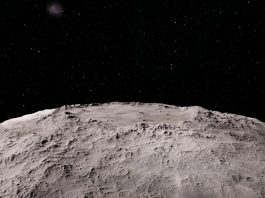A team of researchers at Lund University have used data from the Gaia space telescope to show that a passing dwarf galaxy, Sagittarius, caused large ripples in many parts of the Milky Way.
The wave motions can be seen within the constellation Sagittarius, and astronomers predict the passing dwarf galaxy shook our galaxy hundreds of millions of years ago.
The study, published in Monthly Notices of the Royal Astronomical Society, shows the team’s findings about the wave motions found in the outer regions of the galactic disk.
The Gaia telescope: new advancements in astronomy
The Milky Way contains between 100 and 400 billion stars. Astronomers estimate the galaxy was born around 13.6 billion years ago, as it emerged from a rotating cloud of gas made up of hydrogen and helium.
Over billions of years, the gas collected in a rotating disk where billions of stars, including the Sun, were formed.
By using data from the European space telescope, Gaia, the team were able to study much larger parts of the Milky Way than had previously been possible. The telescope has been in use since 2013 and has measured the movement of around two million stars across the sky, and the movement towards or away from us of about 33 million.
“With this new discovery, we can study the Milky Way in the same way that geologists draw conclusions about the structure of the Earth from the seismic waves that travel through it. This type of ‘galactic seismology’ will teach us a lot about our home galaxy and its evolution”, said Paul McMillan, astronomy researcher at Lund University and leader of the study.
Studying the Milky Way’s discs
The scientists measured how strong the wave motions were in different parts of the disc, putting together data about the dwarf galaxy’s history and orbit around our galaxy.
The results showed that for stars in the disc between around 10 and 14 light years from the Galactic centre, the vertical velocity is strongly dependent on the angular momentum, azimuth, and position above or below the Galactic plane.
McMillan concluded: “We can see that these stars wobble and move up and down at different speeds. When the dwarf galaxy Sagittarius passed the Milky Way, it created wave motions in our galaxy, a little bit like when a stone is dropped into a pond.
“At the moment, Sagittarius is slowly being torn apart, but 1-2 billion years ago, it was significantly larger, probably around 20% of the mass of the Milky Way’s disk.”









